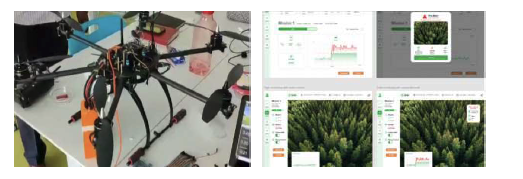This website uses cookies so that we can provide you with the best user experience possible. Cookie information is stored in your browser and performs functions such as recognising you when you return to our website and helping our team to understand which sections of the website you find most interesting and useful.
ATTRACT student projects
Discover the ATTRACT student projects boosting sensing and imaging technologies to enable breakthrough innovations for society
Team
The team members working on this project are the following:
Henri Hakulinen
Mechanical engineering
Aalto University (Espoo, Finland)
Jiaxue Hao
(Johanna)
Mechanical engineering
Aalto University (Espoo, Finland)
Chaonan Zhang
(Cecilia)
Human computer interaction and design
Aalto University (Espoo, Finland)
Omar Morad
Mechanical engineering
Aalto University (Espoo, Finland)
Chengxi Zhang
(Chege)
Spatial planning and transportation
Aalto University (Espoo, Finland)
Tejas Sarvankar
Artificial intelligence, machine learning & management
Indian School of Design and Innovation (Mumbai, India)
Shubham Gupta
Industrial design & mechanical engineering
Indian School of Design and Innovation (Mumbai, India)
Pooja Doshi
Industrial design
Indian School of Design and Innovation (Mumbai, India)
Hemant Kumar
Das
Graphic art & animation
Indian School of Design and Innovation (Mumbai, India)
Project HEIMDALL
is based on ATTRACT project SMART
Background
Wildfires are an increasing global problem; climate change, longer dry seasons and growing density of human population contribute to the increasing severity of the problem. Challenges comes from monitoring and detection of fires in remote areas like forests. This problem has pushed the development of more advanced monitoring solutions and technologies further.
Unmanned aerial vehicles (UAVs) and drones are already widely used in multiple different monitoring and detection systems. Most advanced sensor technologies are combined with UAVs creating fairly efficient and accurate monitoring systems. However, these systems are extremely expensive and not yet well available. Problems come when combining expensive and heavy sensor technology on a UAV while still expecting good performance and operation time.
Target of this project is set to develop and build an MVP (minimum viable product) of a robust and mobile wildfire detection system utilising new extremely sensitive sensor technology that is currently being developed at CERN. This MVP is used to validate the monitoring system use case and the detection capability of the new sensor.
The system is designed and built for firefighters and other officials. In addition to the MVP, a business plan is created. As a final product of this project, the team developed and manufactured a drone-based wildfire detection system employing all necessary hardware and custom user interface. Wildfires are not a new problem, but the severity of the problem has been increasing. Due to global climate change and increase of human population, there are more and more wildfires happening every year, resulting in damage to property, loss of life and destruction of nature. Higher temperatures and longer dry seasons spread the risk of fire even to the northern parts of Europe. Last year, 2019, Australia faced the most devastating fires that the whole world has ever seen.
As mentioned, this is happening in the northern parts also. In 2018, Sweden faced the biggest forest fires in their history. Controlling and extinguishing forest fires are large scale operations. Fire can be controlled by creating fire breaks or the fire can be extinguished by bringing water sources or using nearby water sources in forest. While the fire is not detected, it will continue to grow rapidly and be exponentially more difficult to control or extinguish. These operations are expensive and consume a lot of resources. The economic effect is devastating and creates immediate need for efficient early detection systems.
The new UV-based fire detection sensor technology is being developed at CERN and soon to be taken into production. This sensor creates an opportunity to create a more accurate and affordable wildfire detection solution. This project has targeted all efforts in creating a product that utilises this sensor in the most effective way.
Outcome
The MVP developed in this project is a combination of three main components. A hexacopter drone to provide required mobility, a payload containing all necessary electronics and sensors and a user interface (UI) to visualise crucial sensor and detection data. Payload structure is developed from ground up and optimised for the use of UV sensor in fire monitoring while integrated to a drone.
Electronics are selected and developed to support data transmission and enable automated active control of sensor orientation. User interface is designed based on the needs of firefighters and important data of fires. It visualises all necessary sensor data together with video feed and location on map. Complete UI was developed, but for validation, user test and application development purposes a simplified version was created as well.
End product is a fully functional hexacopter employing a custom payload with new fire detection sensors connected to a control station presenting a custom-designed user interface.


